Global Multi factor Authentication market is estimated to be worth USD 14.6 Billion in 2022 and is projected to grow at a CAGR of 15.8% between 2023 to 2032. The study has considered the base year as 2022, which estimates the market size of market and the forecast period is 2023 to 2032. The report analyzes and forecasts the market size, in terms of value (USD Billion), for the market. The report segments the market and forecasts it by component, by authentication, by model type, by end user Industry and region/country.
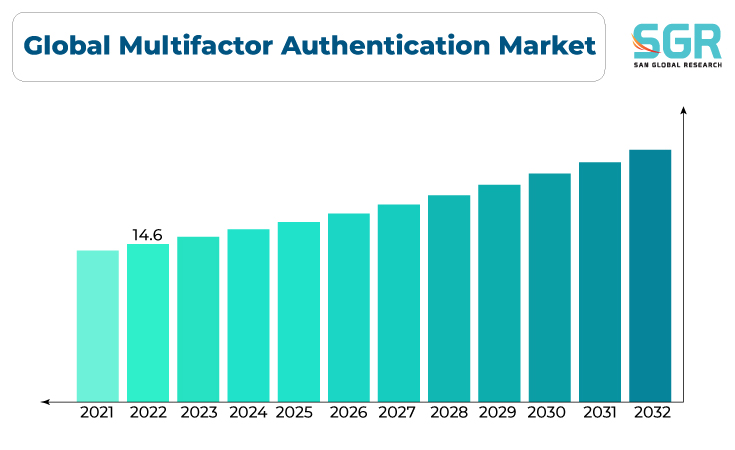
The Global Multifactor Authentication market has become increasingly important in securing digital identities, data, and access to systems, particularly in a world with growing cyber threats and the need for enhanced security. The rising number of data breaches and cyberattacks has elevated the importance of MFA in protecting sensitive information. Organizations are investing in MFA solutions to strengthen their security posture. The digital transformation of businesses and the shift to remote work have increased the need for secure access to digital resources. MFA helps ensure that access is granted to authorize users. The adoption of cloud services has driven the demand for MFA solutions to secure cloud-based applications and data. The proliferation of smart phones has made mobile-based MFA methods, such as biometrics and one-time pass codes, more accessible and user-friendly.
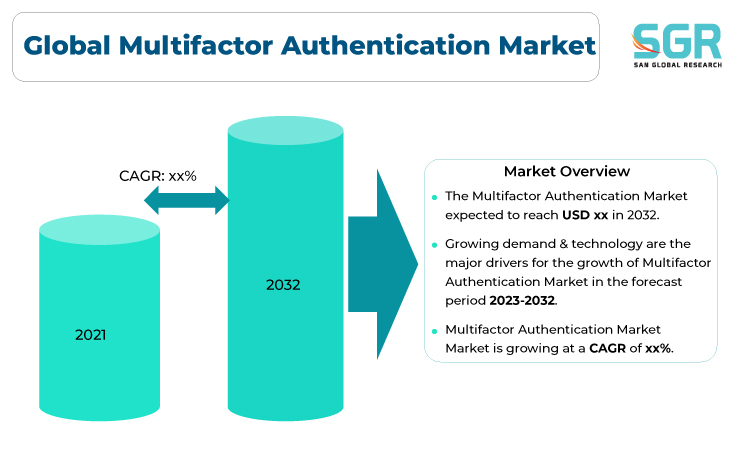
Region wise Comparison:
North America, particularly the United States and Canada, has been a significant adopter of MFA solutions. The region has a large and mature cyber security industry and a strong focus on data protection and privacy.
European countries, including the European Union member states, have been proactive in implementing MFA, driven by data protection regulations like GDPR. European financial institutions and government agencies often use MFA to secure access to sensitive data.
The Asia-Pacific region has seen growing adoption of MFA, driven by the rapid digitization of businesses, government initiatives, and increasing cyber threats. Countries like Japan, South Korea, and Singapore have been leaders in MFA adoption.
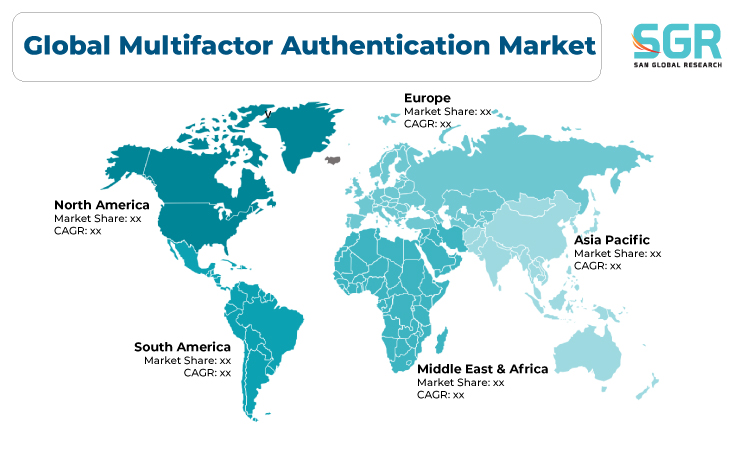
MFA adoption in Latin America has been on the rise, especially in countries like Brazil and Mexico. Financial institutions and e-commerce businesses have been early adopters.
Africa has also seen an increase in MFA adoption, particularly in countries with emerging digital economies and growing online services. MFA is used to secure access to mobile banking and government services.
The Middle East has implemented MFA solutions in various sectors, including government services, healthcare, and financial institutions. Countries like the United Arab Emirates and Saudi Arabia have been at the forefront of MFA adoption.
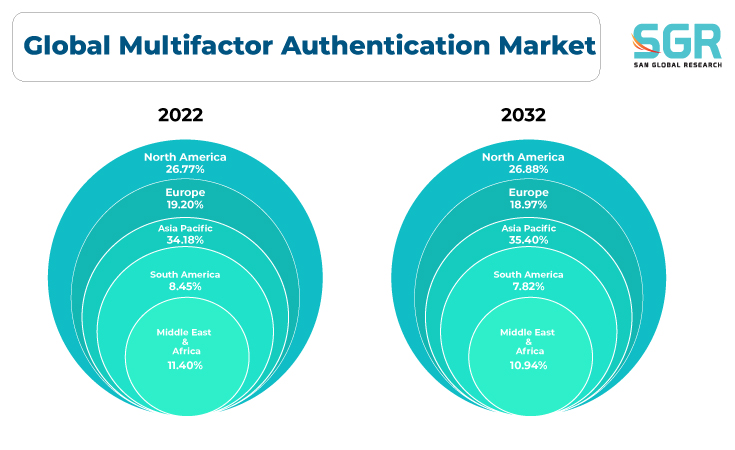
Segmentation
The Global Multifactor Authentication market is segmented by component, by authentication, by model type, by end user Industry and region/country.
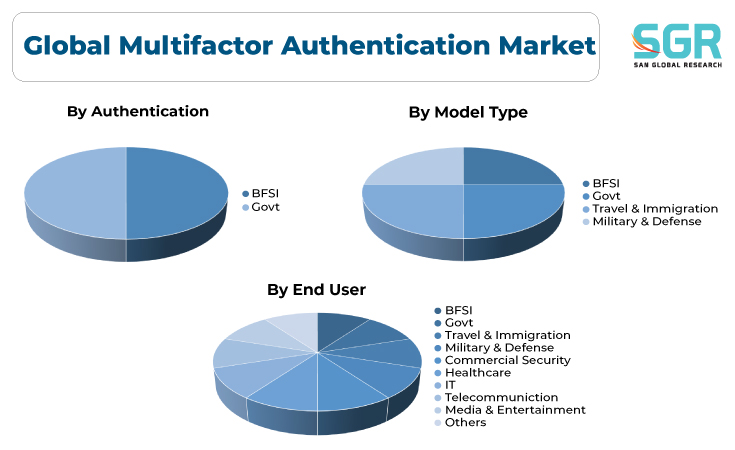
By Component:
- Based on the Components, the Global Multifactor Authentication market is bifurcated into Hardware, Software and Services – where the Service is dominating followed by Software and Hardware in terms of share.
By Authentication:
- Based on the Deployment, the Global Multifactor Authentication market is bifurcated into On Password Based & Password Less – where the Password Based is dominating and ahead of Password less in terms of share.
By Model Type:
- Based on the Model Type, the Global Multifactor Authentication market is bifurcated into Two Factor, Three Factor, Four Factor and Five Factor – where the Two Factor leads the way and is ahead of others.
By End Users:
- Based on the Enterprises, the Global Multifactor Authentication market is bifurcated into BFSI, Govt., Travel & Immigration, Military & Defense, Commercial Security, Healthcare, IT, Telecommunication, Media & Entertainment and Others – where the BFSI sector is dominating and ahead of Others.
On the basis of region
- North America
- Europe
- Asia Pacific
- South America and
- Middle East and Africa
In 2022, North America is anticipated to dominate the Global Multifactor Authentication market with market revenue of XX USD Million with a registered CAGR of XX%.
Key Players:
The key market players operating in the Global Multifactor Authentication market include.
- Microsoft
- Thales
- Okta
- Broadcom
- OneSpan
- CISCO
- One Login
- Oracle
- Keyless
- Luxchain
Drivers:
Growing sector across the globe
The global multifactor authentication (MFA) market is driven by a range of factors and trends that emphasize the need for enhanced security in the digital age. MFA is a crucial technology for securing access to systems, data, and online services. The increasing frequency and sophistication of cyber attacks, including data breaches, ransom ware, and identity theft, have heightened the demand for stronger authentication methods to protect against unauthorized access. Stringent data protection and privacy regulations, such as GDPR (General Data Protection Regulation) in Europe and HIPAA (Health Insurance Portability and Accountability Act) in the United States, require organizations to implement strong authentication methods to safeguard sensitive data and ensure compliance. The ongoing digital transformation of businesses and the adoption of cloud-based services have increased the need for secure access to digital resources. MFA helps ensure that access is granted to authorize users. As the workforce becomes more mobile, with employees using various devices to access corporate resources, MFA has become essential for verifying the identity of users and securing their access.
Opportunity:
Evolving Market
The global multifactor authentication (MFA) market offers numerous opportunities for growth and innovation, driven by evolving security needs, technological advancements, and regulatory compliance requirements. The development and adoption of password less authentication methods, which eliminate the need for traditional passwords, present a significant opportunity. These methods can include biometrics, mobile push notifications, and hardware tokens. They enhance security and improve the user experience. As biometric technology continues to mature, there is an opportunity to expand biometric authentication methods to more devices and applications. Biometrics, such as fingerprint recognition, facial recognition, and iris scanning, offer a high level of security and convenience. Mobile devices have become central to daily life, making mobile-based MFA solutions increasingly important. The growth of mobile apps and the use of mobile push notifications for authentication offer opportunities for mobile-centric MFA solutions.
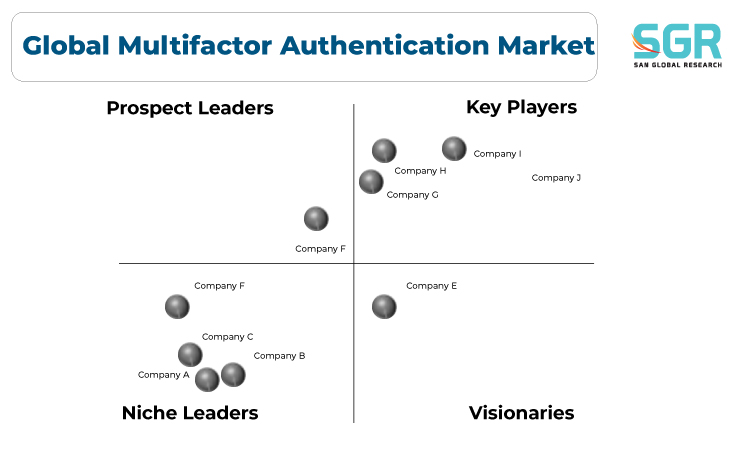

 Description
Description
 Gera Imperium Rise,
Gera Imperium Rise,  +91 9209275355
+91 9209275355


